Slime Molds
Despite their name slime molds are not molds although people used to think they were, They are not mushrooms and neither are they fungi. Slime molds were long classified together in the Myxomycophyta as part of the fungi, but they are now known to be unrelated. Their common name refers to part of some of these organism’s life cycles where they can appear gelatinous or slimy (thus the name slime). However, this feature is mostly seen with the Myxomycetes, which are the only macroscopic slime molds. Slime molds are the split personalities of the natural world. One minute they act like plants and just hang around in rotting vegetation or dung. However, when conditions become less favorable for them, they crawl together like animals and fuse into a group form called a plasmodium. They move slower than snails at speeds up to 1/25 th of an inch per hour (with an exceptional few moving twice that fast). Slime mold plasmodiums are slow-motion predators, usually locating bacteria or fungi to eat. They scavenge decaying organic material as well. As slime molds flow over and engulf their food, they ingest it. If it turns out to be inedible, they will eject it. Slime molds apparently use chemical signals given off by food sources to sense which way to move. Many slime molds look like throw up and they come in many slimy colors including yellow, raspberry, orange, and green. Scientists classify slime molds mainly into 2 groups. First are the plasmodial slime molds which are basically gigantic single cells with thousands of nuclei. They are formed when individual flagellated cells swarm together and fuse. The result is one large bag of cytoplasm with many diploid nuclei. A second group, the cellular slime molds, spends most of their lives as separate single-celled amoeba like organisms, but upon the release of a chemical signal, the individual cells aggregate into a great swarm. Cellular slime molds are thus of great interest to cell and developmental biologists, because they provide a comparatively simple and easily manipulated system for understanding how cells interact to generate a multicellular organism. Since there are only a few slime molds in Fontenelle Forest and Neale Woods we don’t classify them scientifically but simply identify them by certain easily seen visual characteristics.
-
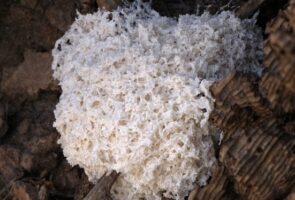 Mucilago Crustacea
Mucilago Crustacea
-
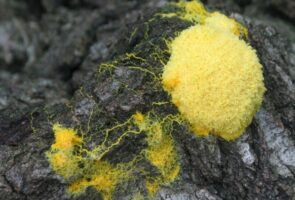 Many-Headed Slime
Many-Headed Slime
-
 Chocolate Tube Slime
Chocolate Tube Slime
-
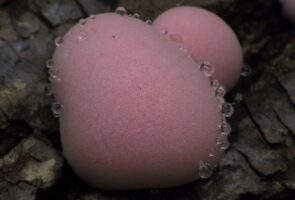 Wolfs Milk Slime
Wolfs Milk Slime
-
 Red Raspberry Slime
Red Raspberry Slime
-
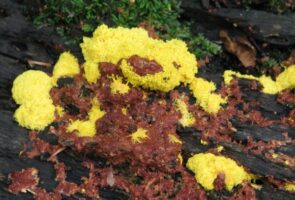 Scrambled Egg Slime
Scrambled Egg Slime
-
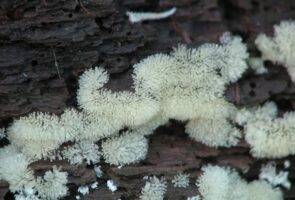 Coral Slime
Coral Slime
